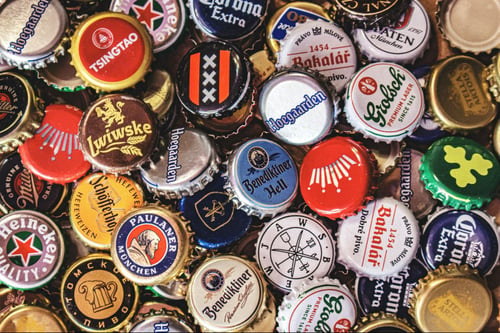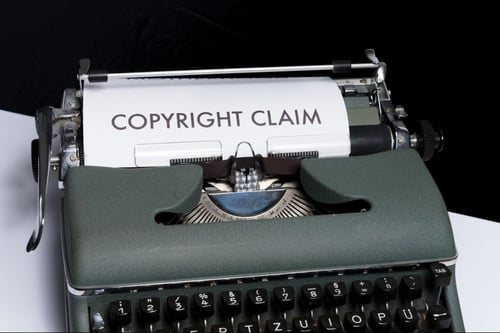If you’re a business owner, your brand identity has value and deserves to be protected. Whether it’s the name of your business, your logo, your slogan, or any original materials or assets your business creates, losing the rights to these properties can lead to trouble. Copyrights and trademarks are two common forms of intellectual property protection. We’ll walk you through the difference and give you the quick rundown on how to get a federal registration for them.
NOTE: The following information applies to the United States of America. Copyright and Trademark laws and application processes may vary in other countries. For the most accurate information about your local copyright and trademark laws, consult an intellectual property attorney.
What Is a Copyright?
Copyrights protect original works. These include but are not limited to novels, music, movies, software code, photographs, and paintings. The Copyright Act of 1976 grants copyright owners the rights they currently have.
Legal Rights
A copyright grants the copyright owner the exclusive rights to print, display, distribute, perform, and publish the work in question.
Creation
Copyrights only apply to original works.
Tangible Medium
A copyrighted work must be established in a fixed form. Some examples of tangible mediums include books, charts, films, sound recordings, performances, and computer programs.
Duration
A copyright lasts for the life of the author plus seventy years after their death.

What Does a Copyright Protect?
Here’s a short list of examples of copyright-eligible works:
- Poetry
- Novels
- Other forms of original writing
- Art
- Research
- Movies
- Songs
- Other forms of audio and video materials
- Computer software
- Architecture
A copyright DOES NOT protect:
- Ideas
- Discoveries
- Principles
- Listings of ingredients or contents (although a recipe or instructions can be copyrighted)
- Works that are considered "common property," such as calendars or height and weight charts.
- Original inventions and inventors. Patents protect those.
What Is a Trademark?
Trademarks protect anything that identifies a good or service and distinguishes it from others. This could include a business name, slogan, logo, domain name, et cetera. Trademark-eligible items are often called marks. A trademark prohibits the use of protected marks or any marks similar enough that they could cause confusion by anyone other than the trademark holder.
Arbitrary Trademark
The mark on its own has no relation to the use or product. This typically describes logos. The Android green creature logo is an example of an arbitrary trademark.
Fanciful Trademark
The mark on its own has no meaning. This typically describes brand names that are not actual words like Hulu or Lululemon.
Suggestive Trademark
A product name that suggests what the product is like Netflix or Coppertone.
Product Packaging or Trade Dress
A trademark on the design of the product or packaging. For example, the shape of Coca-Cola’s bottle or the hexagon top on Tabasco sauce.
Service Mark
Though trademarks can apply to both goods and services, a service mark is a subset of trademarks that distinguishes services provided by a company from those provided by another.

What Does a Trademark Protect?
Trademarks protect fewer categories than copyrights.
- Brand names
- Logos
- Business names
- Slogans
The Difference Between Copyright and Trademark
Type of Intellectual Property
Copyrights and trademarks apply to different types of assets. Copyright protects work, trademark protects items that distinguish one business from another.
Timing
A copyright is generated automatically when an original work is created, a trademark is established through common use. Copyrights expire seventy years after the author’s death, trademarks don’t expire.
Symbols
- © denotes copyrighted work
- ® indicates that a trademark has been registered for this item
- ™ denotes a common law trademark
Governing Bodies
The general public sometimes uses the terms copyright and trademark interchangeably, but they are different enough in the eyes of the law to have separate federal government offices. Copyrights are granted by the United States Copyright Office and trademarks are granted by the United States Patent and Trademark Office.
Online Copyright and Trademark Infringement

Copyrights and trademarks apply to digital materials as well as physical ones. It works a little differently though. The Digital Millennium Copyright Act (DCMA) applies to online copyright infringement. The law criminalizes production and dissemination of technology, devices, or services intended to circumvent measures that control access to copyrighted works. Basically, this law fills in the gaps in pre-existing copyright laws that allowed infringement to happen on the internet.
The US Federal Government does not have an equivalent of the DCMA for trademarks. That makes online trademark infringement the responsibility of the International Corporation for Assigned Names and Numbers (ICANN). If you’re not familiar, you can think of ICANN as the governing body of the internet. Online trademark disputes are typically related to domain names. ICANN’s policies on these matters are called the Uniform Domain Name Dispute Resolution Policy (UDRP).
How to Register a Copyright
Filing an application with the U.S. Copyright Office will require you to submit a copy of the work you wish to register. The registration process typically takes 4-5 months. Once you’ve submitted your copyright application, feel free to add a copyright notice to your work. This will preemptively prevent copyright infringement. Your copyright notice should include:
- The © symbol or the word copyright
- The name of the copyright owner
- The year of publication
Benefits of Copyright Registration

You may be wondering “Why should I register my work if copyright protection is automatic?” Sure, registering with the U.S. Copyright Office is optional, but it has benefits that you wouldn’t get otherwise such as:
- Adding your copyright to the public record
- A Certificate of Registration
- If completed within five years of registration it is sufficient evidence to prove a case in court
How to Register a Trademark
The trademark application process starts by making sure that your mark is not already in use. To go deeper than a Google Search, work with an intellectual property attorney to conduct a comprehensive trademark search. If you do find out that it’s already in use, you’ll unfortunately have to make some changes before you file. That may be frustrating, but it’s better to do this before you attempt to file a trademark than after.
Once you’ve made sure your mark is original, submit your trademark application as soon as possible. The date you file your application becomes the date after which anyone who tries to file for a similar mark will be rejected.
How to Protect a Copyright
Properly Marking
When a copyright can’t easily be added to your work, mark it with a signature or watermark when applicable so it can all be traced back to you. This mostly applies to visual art.
Poor Man’s Copyright
The poor man’s copyright is the practice of sending your own work to yourself to establish a timeline and paper trail. It can be an effective means of keeping records for yourself, but it is not a substitute for copyright registration.
Creative Commons
Creative Commons offers free copyright licenses.
How to Protect a Trademark

Federal trademark registration with the U.S. patent and trademark office (USPTO) is also optional, but it’s the best way to protect your brand. Before you register, you should check with the USPTO and your state trademark office to make sure the name you want to trademark is not already in use.
If you register your trademark with the USPTO, you can use the ® symbol for registered trademark. If you don’t, you can use the ™ symbol to signal common-law rights. Unlike the copyright symbol, it is illegal to use the registered trademark on marks that are not registered with the USPTO.
Conclusion
Whether a copyright or a trademark best fits the needs of your business, we recommend consulting with an intellectual property law firm to set your application up for success as much as possible. Protecting your brand identity and intellectual property is worth doing right.
Here at Sav, we’re dedicated to creating and protecting your digital identity from your domain to your website to the products and services you sell. Create an account today to get started.
Newsletter
Popular
Top Articles
Recommended articles
How to Come up With Ecommerce Product Ideas
Whether you’re starting a new ecommerce business or expanding a pre-existing one, what products to sell online is an important decision....
Read moreHow to Create a Modeling Portfolio
What is a Modeling Portfolio? A modeling portfolio is a demonstration of your skills and talent you can show to potential employers and...
Read moreThe Best Side Hustles From Home to Try
Why Start a Side Hustle from Home? Earn Extra Money Being alive is expensive right now. Whether your financial goals are to pay off your...
Read more



